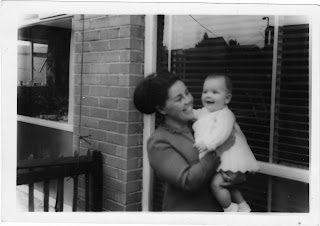Amongst the things my Mam gave me from her clear out was some baby knitting patterns dated from the 60's and 70's. They were for layettes that you just don't see anymore as they're not fashionable anymore. Also, less people can knit now compared to my Mam's generation. My Mam taught me to knit but I don't know many people my age who can also knit. Having said that, there has been a resurgence in ladies 'of a certain age' who want to learn. Stitch and bitch groups have become popular, but such skills are not being passed down from mother to daughter as they once were.
This brings to mind Richard Slee's piece 'Sausage' which was about the 'death of the male DIYer. But it was also about skills that weren't being passed down from fathers to sons anymore.
I thought I'd do some test pieces, knitting samples from the patterns to be cast in porcelain and bone china slip. It's about nostalgia, theses patterns and skills are a piece of my history and my family's history, a celebration of a craft that was taken for granted. People knitted and sewed as there wasn't the availability of such items that there is now, and people had less money to spend. I still knit babies blankets for friends and they say that it's much nicer to receive a gift that has been hand made than something bought from a high street shop.
I like the idea of casting such items in porcelain. They become something else, like fossils or like the old fashioned figurines that my grandparents collected.
A 3 out of 3 pattern made with cotton double knitting yarn
The fired porcelain version of the blue sample -
the detail wasn't replicated very well, I think the slip was too thick and also, the sample has stretched and lost it's shape.
Knitted sample made with Indian craft cotton, thicker than DK.
Cast white sample in porcelain slip -
Again, the detail of the stitches wasn't captured very well as the slip was too thick.
Sirdar snuggly 3 ply
I wasn't sure if this would absorb the slip as it is composed of man-made fibres, no cotton at all. The pattern used was similar to the previous one but consisted of 5 rows of pattern.
As the slip was too thick with the previous samples, I added a deflocculant to the slip which helps to suspend the clay particles in the liquid.
Above sample soaked in bone china slip -
the sample absorbed the slip very well. The slip was of the correct fluidity/viscosity so the fine detail of the stitches has been picked up.
Fired bone china sample -
I'm really pleased with how this sample came out. The wool and pattern were both very fine so I am pleased that the bone china has captured this.
.JPG)
.JPG)















.JPG)








.JPG)
.JPG)
.JPG)

.JPG)

.JPG)